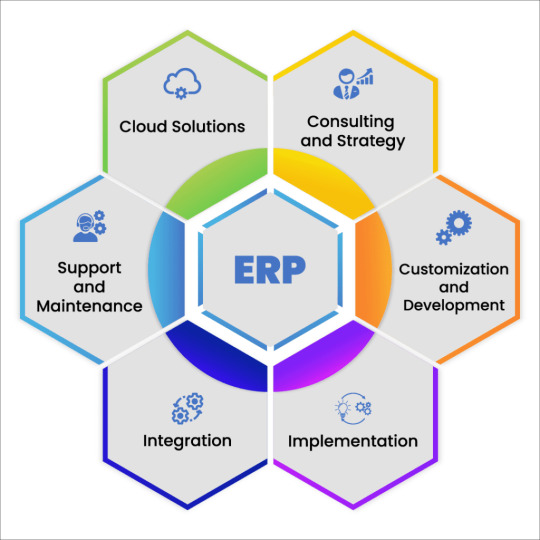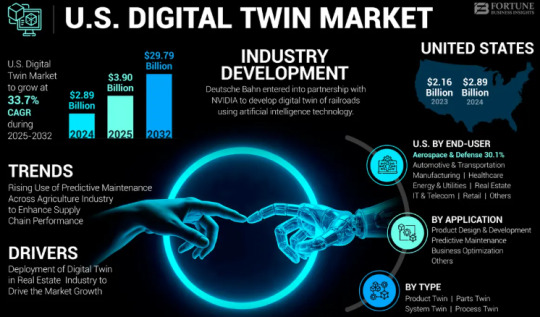#oracle utilities implementation
Explore tagged Tumblr posts
Text

Differently designed: Barbra gordon as Chariot


Elseworld Gotham knight:
Chariot.
Chariot Combat is based on the idea her chair is
Her transport
Her weapon
&
Her symbol of justice
Chariot uses wayne tech inspired by batwing armour as well as the batmobile and nightwings bike to protect gotham.
The chair has 2 modes: pursuit and combat
Pursuit mode is inspired by racing wheelchairs as seen below. Transferring powerful jolts of kinetic and electric energy stored in her gloves(Gloves designs inspired by wheelchair racing gloves), Chariot can achieve high speeds by simply pushing her chair in either mode.
360 grapple hooks and projectile shooters.


The 3rd wheel is based on existing collapsable wheel prototypes, and stores underneath her chair's seat when not in use. When shifting into pursuit mode, the 3rd wheel extends to the front of her chair, while her seat adjusts to a racing position. Her seat tilts forward while her non-functioning legs are tucked and held underneath, giving her more control while allowing more energy with each push.


Chair mounted grappling hooks allow Barbara to handle anything from gaps to sharp turns, to elevation. While not used in pursuit mode,

the smaller rear support wheels are able to quickly disperse smoke pellets from behind. The chair also has electrified panels similar to the batmobile, along with a reinforced front cover for protection, but also a clear view of the targeting and computer system. For chariot pursuit mode allows her to travel farther faster and even take out vehicles. We went through many designs before we were happy, integrating ideas from paraplegic designs adapted for motorbikes and racing cars and speaking to people who have made such things and own personal experience with adaptations..
Combat mode is more similar in design to rugby and basketball chairs; The combat mode uses the concealed 3rd wheel to help with rotation and can adjust its size to help with more precise movements. The same weapons available in pursuit mode also exist here in combat mode.
In addition, the armour is more compacted and focused on protecting and securing Chariot while still allowing her to use her signature new weapons the dual staffs.
For any wondering how you fight in a chair, I recommend googling wheelchair boxers, breakdancers, and fencers. Along with my personal experience, I can tell you although it's harder to hit someone in the face you are still dangerous and capable if you know how to fight.
Now onto to chariots outfit and design herself.



(barba outfit showing a purple with yellow hue highlight race suit with better placed weapon and bataragns and showing her now atrophied legs and her helmet having the kind of bat ears her cape and the like and her weapon that comes out of gloves.)
Barbra Gordon has SCI a spinal cord injury not much other detail is explained, though it seems she did not develop lose of movement in her other nerves across her body which can often occur. So, going on this I was disappointed with oracle design, as she would develop loss of muscle in her legs and her body shape would change, so I implemented that design as shown.
Onto her gadgets she has her utility belt heavily kept loose but connected to prevent nerve compression and clots inside she has all standard gadgets, her thigh holsters are for her batarangs places there so in either chair form she can fire easily. Now on to the gloves the main charge literally, the can be used as a stun as a way to overcharge the chair and opponents, it also is where her extendable and eject-able polearm lies allow her to reach anyone she needs, there are also gas pellets able to be projected and even batarangs if she so chooses.

(Gauntlet have bat spikes arms but also show that they reveal pole-weapon but also function as projectile)
Cape wise you need to have a cape, but we kept it short and simple hardens as she rides to protect her back literally.
All in all, I feel this design keeps her connection to the bat family while also being more as to what a paraplegic hero needs. Also, I'd like to point out, while Barbara was Oracle, her chair design was terrible for her spinal injury. Without a strap belt, she would be constantly falling out of that chair. I DO understand the reason why chairs can be hard but it still vexes me. Most of us can agree that Barbara was thrown in the fridge during the Killing Joke, an issue that persists in comics. Even so, I feel how her character was handled afterward, confining her to the “wheelchair-bound hacker” was an even bigger waste!
We could have had a disabled icon, something you rarely see, a tech-heavy hero with endless creativity, and just maybe Barbra could have had a real story and a real fight, not just slight moments till she was suddenly fixed. Which by the way is quite offensive. But I know DC the universe reboots and status quos maintained, which is why I offer an Elseworlds alternative.
The only comic I could find was the oracle code by Marieke Nijkamp which was an Elseworlds story, I liked it for showing that disabled people are forgotten and the medical world still has a very eugenics view still of disability. However, she still only became Oracle, and she wasn’t connected to batman at all. Then there was her choosing to stay inside her world and not be in the outside world which is a shame. So many of us disabled people are trapped inside, and it feels like a missed opportunity to not show her in the outside world striding along with her friends. But, she wasn’t fridged though that was a nice change.
What I'm trying to say with all this is: We had a chance a real chance to have a hero in the mainstream that still fought alongside DC's greatest heroes and wasn’t relegated to behind the scenes, or something to be pitied. Now I know some people loved it, and I'm not saying if a disabled person felt inspired by Oracle that’s bad, she isn’t. I'm just trying to explain that we are forgotten, and media has yet to reflect us positively, being productive members of society. Barbara as Oracle brings this point home to me and it’s a shame. So many times, I have felt offended by Barbara's treatment and characterization, only finding enjoyment in the shorts birds of prey run. But even then, I still felt her seen as inspiration porn when used, instead of a real person. Of course, I understand why the decision was made, why would an able-bodied creator think this? Especially with the reason, it happened was to do a joker story. I get it, that’s why we made this, there are other options there are different designs we can do, and we hope this shows you how awesome we can be with just a different perspective.
Theses opinions are my own and since this was a big load of work id like to thank @gaminghippy for his help especially with chariots outfit, support and input into mechanical designs crow, cj, vinnie, sassie and slug and the disabled community whom I spoke to for research. But there are 2 I want to specially thank @mgiht_be_evil for been my co designer and who edited this speech minus here I may do all the art, but this never would have happened without you none of this series would. And, to my amar who is the one whose always deemed our disabilities as superhuman. All opinions are mine and my teams we bare no hate just alternatives.
#dc batman#batman#barbra gordon#chariot#disability inclusion#disabled representation#artists on tumblr#digital art#disability aids#differently designed#comic#dc comics#dc fanart#dc universe#elseworlds#batgirl#oracle#joker#bruce wayne#wheelchair art#wheelchair
7 notes
·
View notes
Text
Exploring the Significance of ERP Software: How It Works, Why It's Vital for Companies, and the Benefits for Your Business
Enterprise Resource Planning (ERP) software stands as the backbone of modern businesses, planning a masterpiece of operations seamlessly. This comprehensive suite of integrated applications manages core business processes, including finance, HR, inventory, supply chain, and more. Its significance lies in its ability to streamline operations, enhance efficiency, and foster data-driven decision-making.
Cloud-based ERP solutions offer a versatile edge over traditional on-premises systems. They facilitate real-time data accessibility, scalability, and cost-effectiveness. Conversely, on-premises ERP software provides robust security and customization options, ideal for businesses with specific compliance needs or intricate operational structures.
Adopting the best ERP Software Consulting Solutions is a strategic move for companies, as it centralizes disparate processes into a unified platform, eradicates data silos, and enhances collaboration, thereby boosting productivity and offering a comprehensive view of the business for smarter, data-backed decisions."

The benefits of ERP software for your business are multifaceted. It optimizes resource utilization, streamlines workflows, minimizes errors, and accelerates reporting cycles. This ultimately results in improved customer satisfaction, reduced operational costs, and better agility in responding to market changes.
When seeking the best ERP software development services, solutions, implementation, or consulting, businesses must prioritize expertise, reliability, and compatibility. The best ERP software development services and solutions cater to unique business needs, offering tailor-made solutions for seamless integration and functionality.
Choosing the best ERP software implementation services or solutions involves a thorough evaluation of the provider's track record, customer reviews, and adaptability to your company's requirements. Expert ERP software consulting services navigate businesses through the maze of choices, ensuring optimal software selection, implementation, and long-term success.
In conclusion, the strategic implementation of ERP software can revolutionize business operations, driving efficiency, innovation, and competitiveness. Selecting the best ERP software development, implementation, and consulting services is pivotal for maximizing the benefits and leveraging the full potential of this transformative technology.
ERP Offerings & Practice's
SAP/S4 HANA ERP Software Solutions
Ellucian Banner ERP Software Solutions
Peoplesoft ERP Software services
Oracle Cloud ERP Software services
UKG ERP Software services
Salesforce ERP Software services
3 notes
·
View notes
Text

Key features and components of #Oracle #Primavera EPPM include:
- Project Management:
1. Project Planning: Allows users to create detailed project plans, define tasks, and establish dependencies.
2. Resource Management: Helps in resource allocation and tracking to ensure optimal utilization of resources.
3. Cost Management: Enables the tracking and management of project costs.
- Portfolio Management:
1. Strategic Planning: Helps organizations align project portfolios with strategic business objectives.
2. Portfolio Analysis: Allows for the evaluation and comparison of different project portfolios to make informed decisions.
- Risk Management:
1. Risk Analysis: Identifies and assesses potential risks associated with projects and portfolios.
2. Risk Mitigation: Provides tools for developing and implementing risk mitigation strategies.
- Collaboration and Communication:
1. Team Collaboration: Facilitates collaboration among project teams, stakeholders, and other relevant parties.
2. Document Management: Allows for the centralized storage and management of project-related documents.
- Reporting and Analytics:
1. Performance Reporting: Provides customizable reports and dashboards for monitoring project and portfolio performance.
2. Analytics: Offers tools for analyzing historical project data and identifying trends.
- Integration with Other Systems:
1. Integration with Oracle Applications: Primavera EPPM is often integrated with other Oracle applications, such as Oracle ERP (Enterprise Resource Planning) systems.
- Scalability and Flexibility:
1. Enterprise Scalability: Designed to handle large and complex project portfolios.
2. Configurability: Allows organizations to configure the system to meet their specific needs and processes.
#KhalidAlbeshri #Holdingcompany #CEO #Realestate #gulfcountries #contentmarketing #businessmanagement #businessconsultants #خالدالبشري
#advertising#artificial intelligence#autos#business#developers & startups#edtech#education#finance#futurism#marketing
2 notes
·
View notes
Text
Smart Contracts

Smart Contracts: How is Technological Advancement Revolutionizing Industries?
Highlights:
What are smart contracts?
What are some advancements in smart contract technology?
How are leading firms acquiring top positions in this sector?
In recent years, the smart contracts industry has witnessed a notable boom in growth and development, changing specifically in the form of transactions and contracts. Leveraging the power of blockchain technology, smart contracts offer feasible, dependable, and applicable solutions across several sectors.
What are smart contracts?
Smart contracts are effective agreements that self-execute and are securely stored on the blockchain. By autonomously carrying out pre-programmed responsibilities, they disrupt traditional systems by way of disposing of intermediaries. This decentralized framework offers clarity, safety, and efficiency in unique sectors consisting of finance, supply chain management, and real estate.
According to the latest report by Allied Market Research, the global smart contracts sector is predicted to exhibit a notable CAGR of 29.6% between 2023 and 2032.
What are some advancements in smart contract technology?
Over the past few years, there have been considerable advancements in the technology of smart contracts. Here are a few vital developments:
Programmability:
Smart contracts are getting more flexible and programmable than ever. They can be coded in distinct programming languages, allowing developers to create complex logic and conditions within the contract itself. This level of programmability makes it feasible to automate extraordinary commercial enterprise approaches and eliminates the need for manual intervention.
Interoperability:
Smart contracts can now consort with each other and with external systems, allowing for seamless assimilation between specific blockchain platforms. This convergence makes it possible to create new opportunities for collaboration and cross-chain transactions between decentralized applications (dApps).
Oracles:
Oracles are like external data sources that offer real-world information for smart contracts. Advancements in smart contract technology have enhanced the reliability and security of oracles and made sure that the data furnished is accurate and unalterable. This allows smart contracts to make informed decisions primarily based on updated information.
Privacy and confidentiality:
Earlier versions of smart contracts were criticized because of their insufficient privacy measures. Nevertheless, technological advances have allowed the introduction of strategies inclusive of zero-knowledge proofs and steady multi-party computation. These strategies permit private and confidential transactions to take place on public blockchains, thereby broadening the utility of smart contracts in sectors where the safety of data privacy is important.
How are leading firms acquiring top positions in this sector?
The leading players in the smart contracts sector focus more on the provision of automated transactional services to increase both flexibility and security for businesses. In order to expand their market presence, these companies give priority to the acquisition of local and small businesses. In addition, strategies such as partnerships, significant investments, and joint ventures contribute to the rising demand for such services. For instance, in August 2023, Obvious introduced a smart contract wallet called Biconomy Account Abstraction Stack, which operates through a mobile app and supports multiple channels. This wallet is intended to facilitate the execution of transactions, the implementation of custom rules, and the smoothing of complex economic interactions.
On the other hand, in June 2023, Horizen and Ankr collaborated to enhance the accessibility and scalability of the EON smart contract platform. This partnership has provided developers with a set of tools that facilitate the implementation of smart contract applications.
To sum up, the smart contracts industry is growing gradually and causing changes in various industries. As businesses and individuals understand the benefits of this innovative technology, using smart contracts is predicted to boom swiftly. Furthermore, by staying well-informed and embracing the potential of smart contracts, corporations can position themselves at the leading edge of this transformative technology.
For more details and information on smart contract platforms, contact our experts here.
Author’s Bio: Harshada Dive is a computer engineer by qualification. She has worked as a customer service associate for several years. As an Associate Content Writer, she loves to experiment with trending topics and develop her unique writing skills. When Harshada's not writing, she likes gardening and listening to motivational podcasts.
2 notes
·
View notes
Text
The Benefit of Using a Procurement Company With Logistics and Products Transportation Capabilities

Purchase is the procedure of determining as well as obtaining goods and services. It includes sourcing, acquiring as well as covers all tasks from determining prospective suppliers through to shipment from distributor to the individuals or beneficiary. Procurement is a key activity in the supply chain administration.
Logistics staff involvement in assessments offers logistics info as well as data that supports program/response application. All significant business source preparation (ERP) software application vendors like Oracle and also SAP give products around logistics and also transport monitoring. Arrangement and implementation of these products needs in-depth understanding of the market, neighborhood and also global freight plans, and also fundamental understanding of the business technique. The general price of logistics plays a vital part in product pricing. The organization is after that able to prepare ahead for the provision of the goods as well as solutions. Hence, logistics is the cornerstone of firms which create physical items. Logistics also plays a vital duty in military operations. Logistics shortages can create severe problems to the firm's bottom line.
Several business have been proclaimed to shed their market placement owing to rivals having far better logistics monitoring. Ecommerce vendors like Amazon and also ebay.com depend on state of art logistics to keep ahead of the market. Success of firms is not just a variable of how well they do their core-business (like generate a certain product) but additionally exactly how well they contract out non-core parts of their organization to 3rd parties. shipping logistics near me
Provided the intricacy of logistics as well as transport, this is a vital location for outsourcing. Experienced business understand to collaborate with one-stop stores to define vital solution degree contracts around supply chain and after that leave it to the professionals to overcome the complexity as a black box. This permits the firm to focus on where it matters, their core service. Logistics firms give myriad advantages (over attempting an in-house version):.
Logistics automation. Procurement solutions. International network. Shipping as well as freight services. Market experience as well as Quantity price cuts.
Logistics Automation deals with minimizing labor expenses by integrating wise machinery, progressed software program and dynamic tools and modern technologies. As included advantages, automation additionally reduces power as well as material wastefulness, enhances high quality and precision. By using warehousing innovations like RFID, automated placement and also storage, software program based supply tracking, companies give satisfaction with considerable expense advantage (that features co-location of your items).
Purchase services can vary from consultatory on resources purchase to rate monitoring. Companies with both straight (basic material) purchase and indirect procurement (fixing and also upkeep materials). They help come to a sweet area between amount and frequency while offering sector particular value. It is prevalent expertise that apparently inconsonant sectors make use of comparable product and also equipment. For instance, a manufacturing plant calls for safety and security and also clinical supplies, whereas, a health center needs general upkeep products. Utilizing one stop stores enable one to benefit from the large range of materials in their purview.
Shakespeare's 'all the globe is a stage' quite possibly obtains the current business versions with open market acts in between countries being widespread. The capability to supply to remote countries, while not needing to manage disambiguation of policy, money as well as language subtleties is vital to worldwide success. One stop stores have all the global network and also connections to encourage and perform your international shipping undertakings.
The aim of transport is to physically move products in a reputable and also safe way, promptly, price properly and also effectively to its location. Even if a company owns its cars, there may well be events when a demand develops for additional ability, to satisfy peak task or various other short term requirements. This can be fulfilled by the use lorries supplied by an industrial transport company (third party). Additionally using the 3rd party delivery as well as freight solution is advantageous to the company because:.
of the variable lots and also trips can be provided for. the hauler may have the ability to supply a much more affordable as well as an extra reliable solution. the obligation for administration of cars and drivers is no longer the duty of the company (hence enabling staff to focus on much more productive areas). transport logistics near me there is no need for resources to be purchased transportation. Several on-line logistics firms give consulting solutions whereby the customers can conquer their challenges that they face while trading goods. Market professionals well versed with plans and also laws, audit (like SAS70) as well as compliance requirements (for example hazardous and also ignitable materials), dynamic factors (like weather condition, socio-political events) and vendor staminas (like volume discounts and geographical insurance coverage) are gotten in touch with as well as business companies can create their own time and also cost effective logistical time table while optimizing their spending plan at the same time.
3 notes
·
View notes
Text
U.S. Digital Twin Market Size & Trends - Forecasts to 2032

The U.S. digital twin market Industry was valued at USD 2.89 billion in 2024 and is projected to grow from USD 3.90 billion in 2025 to USD 29.79 billion by 2032, exhibiting a CAGR of 33.7% during the forecast period. The rise of Industry 4.0, smart cities, predictive maintenance, and digital-first healthcare is driving robust adoption across key American sectors.
Key Market Highlights:
2024 U.S. Market Size: USD 2.89 billion
2025 U.S. Market Size (Forecast Start): USD 3.90 billion
2032 U.S. Market Size: USD 29.79 billion
CAGR (2025–2032): 33.7%
Market Outlook: Data-driven transformation across manufacturing, energy, infrastructure, and defense
Key Players in the U.S. Market:
General Electric (GE Digital)
Microsoft Corporation
IBM Corporation
Siemens USA
PTC Inc.
Ansys Inc.
Altair Engineering
Dassault Systèmes (U.S. operations)
Oracle Corporation
Bentley Systems
Autodesk Inc.
Honeywell International Inc.
Rockwell Automation
Request Free Sample PDF: https://www.fortunebusinessinsights.com/enquiry/request-sample-pdf/u-s-digital-twin-market-107449
Growth Dynamics
Drivers:
Industrial Automation Push: Rapid adoption of digital twins in discrete and process industries for predictive maintenance and operational efficiency
Smart City and Infrastructure Initiatives: Integration of digital twins for urban planning, traffic simulation, and disaster preparedness
Healthcare Advancements: Adoption of patient digital twins and hospital infrastructure twins for operational excellence
Defense and Aerospace Investment: Real-time virtual modeling of aircraft, space systems, and battlefield logistics
Supportive Federal Initiatives: Investments in digital transformation under CHIPS and Science Act, Infrastructure Bill, and clean energy projects
Opportunities:
Expansion of Digital Twins in EV & Battery Manufacturing
Deployment in Critical Infrastructure: Smart grids, bridges, and rail systems
Digital Twins in Healthcare: Patient-specific modeling, hospital energy management, and surgical planning
Integration with AI and ML for Predictive Diagnostics and Optimization
Metaverse & Immersive Training Simulations for Military and Industrial Applications
Technology & Application Scope:
Core Components:
IoT sensors & data streams
Simulation engines (physics-based, AI-enhanced)
Cloud and edge computing platforms
Real-time data visualization and analytics
Primary Applications:
Product design & lifecycle management
Asset performance monitoring
Smart facility and infrastructure management
Energy optimization and sustainability modeling
Healthcare diagnostics and treatment simulations
Industry Verticals:
Manufacturing
Automotive and mobility
Energy and utilities
Aerospace and defense
Construction and smart buildings
Healthcare and life sciences
Speak to Analysts: https://www.fortunebusinessinsights.com/enquiry/speak-to-analyst/u-s-digital-twin-market-107449
Recent Developments:
February 2024 – GE Digital partnered with a major U.S. utility provider to deploy digital twins for real-time monitoring of renewable energy assets, leading to a 15% boost in power efficiency.
July 2023 – A consortium of U.S. hospitals began implementing patient digital twins to simulate treatment outcomes for cardiac and oncology patients, improving decision accuracy by 23%.
November 2023 – The Department of Transportation launched a national infrastructure digital twin initiative to model bridges, tunnels, and highways for predictive maintenance planning.
Trends Shaping the U.S. Digital Twin Market:
Rise of 5G-powered twins for edge analytics and low-latency industrial control
Low-code platforms making digital twin development more accessible
Expansion into commercial real estate for occupancy modeling and energy control
Combining geospatial data with digital twins for disaster resilience planning
Growth of "green twins" to support environmental sustainability goals
Conclusion:
With a powerful convergence of AI, IoT, cloud, and immersive simulation technologies, the U.S. digital twin market is poised for exponential growth. As industries strive to reduce downtime, improve efficiency, and simulate real-world scenarios in real time, digital twins are emerging as essential tools for operational excellence. Stakeholders across manufacturing, government, healthcare, and energy sectors are increasingly adopting digital twins to drive next-gen innovation, cost savings, and resilience in an increasingly complex world.
Frequently Asked Questions:
1. What is the projected value of the global market by 2032?
2. What was the total market value in 2024?
3. What is the expected compound annual growth rate (CAGR)
for the market during the forecast period of 2025 to 2032?
4. Which industry segment dominated market in 2023?
5. Who are the major companies?
6. Which region held the largest market share in 2023?
#U.S. Digital Twin Market Share#U.S. Digital Twin Market Size#U.S. Digital Twin Market Industry#U.S. Digital Twin Market Driver#U.S. Digital Twin Market Growth#U.S. Digital Twin Market Analysis#U.S. Digital Twin Market Trends
0 notes
Text
Master Oracle Fusion Technical Training for a Future-Ready IT Career
In today’s dynamic digital landscape, businesses are rapidly adopting Oracle Fusion Cloud applications to streamline their operations across finance, HR, procurement, supply chain, and more. As demand grows, so does the need for skilled professionals who can design, develop, and integrate solutions within the Oracle Fusion ecosystem. If you're looking to elevate your career in enterprise technology, Oracle Fusion Technical Training is your launchpad.
What is Oracle Fusion Technical?
Oracle Fusion Technical refers to the backend components that support and enhance Oracle Fusion Cloud Applications. These include integration tools, data migration utilities, web services, and custom development using technologies like BPEL, ADF, and Oracle Integration Cloud (OIC). Technical consultants build, extend, and integrate applications, making them essential to every implementation and support project.
Why Choose Oracle Fusion Technical Training?
Here’s why investing in Oracle Fusion Technical Training is a game-changer:
✅ High Industry Demand
Companies across the globe are migrating to Oracle Cloud. This shift has created a massive demand for technical experts who can customize and integrate cloud solutions seamlessly.
✅ Lucrative Career Opportunities
Certified Oracle Fusion Technical consultants are among the most sought-after professionals in IT. They enjoy excellent salary packages, remote work flexibility, and job security.
✅ Versatile Skillset
Oracle Fusion Technical training covers multiple tools and technologies like:
Oracle Integration Cloud (OIC)
Web Services (SOAP/REST)
BI Publisher Reports
Fast Formulas and HCM Extracts
Data Conversion and FBDI
Application Composer and Page Customization
This diverse knowledge makes you a valuable asset across departments and domains.
What You’ll Learn in Oracle Fusion Technical Training
A comprehensive Oracle Fusion Technical course equips you with hands-on skills through real-time scenarios. The curriculum usually includes:
Fusion Architecture & Security Concepts
Data Migration Tools – FBDI, ADFdi, HDL
Integration Methods – SOAP, REST, and OIC
Report Development – BI Publisher and OTBI
Personalizations and Extensions – Using Application Composer and Page Composer
Workflow and Approvals Setup
End-to-End Project Use Cases
Whether you're new to Oracle or already working with Oracle EBS, these modules bridge the gap and prepare you for live Fusion projects.
Who Should Take This Course?
Oracle Fusion Technical Training is ideal for:
Oracle EBS Technical Consultants transitioning to Cloud
IT professionals exploring Cloud ERP solutions
Computer science graduates aiming for a stable tech career
Integration and middleware developers expanding their expertise
No prior experience with Oracle Cloud is necessary if you're committed to learning with hands-on guidance.
Benefits of Learning from a Trusted Training Partner
Choosing the right training platform ensures not just theoretical knowledge but also real-time project experience. Leading institutes like Tech Leads IT offer:
Expert trainers with 15+ years of industry experience
Live project assignments and case studies
Access to practice environments and tools
Resume preparation and interview guidance
Self-paced video access with lifelong learning support
Career Opportunities After Training
After completing Oracle Fusion Technical Training, you can explore roles such as:
Oracle Fusion Technical Consultant
Oracle Integration Cloud Developer
Oracle BI Publisher Developer
Data Migration Specialist
Oracle Cloud Support Analyst
You can work in top MNCs, implementation partners, or even offer freelance consulting for Oracle Cloud clients.
Final Thoughts
Oracle Fusion Technical Training is more than just a course—it's a gateway to becoming a key player in the digital transformation journey of global enterprises. With the right skills and expert mentorship, you can unlock high-paying roles and contribute to successful Oracle Cloud implementations across industries.
Start your journey today and become a future-ready Oracle Fusion Technical expert!
0 notes
Text
Loyalty Management Market Size, Share, Trends, Demand, Future Growth, Challenges and Competitive Analysis
Executive Summary Loyalty Management Market :
The global loyalty management market size was valued at USD 10.94 billion in 2024 and is expected to reach USD 46.14 billion by 2032,at a CAGR of 19.71% during the forecast period
With Loyalty Management Market research report it becomes easy to develop a successful Market strategy for the business. To formulate this excellent Market report, a combination of best industry insight, practical solutions, talent solutions and latest technology have been employed. This industry analysis report speaks in detail about the manufacturing process, type and applications. The market data analysed and evaluated in this market report makes achieve the business goals and objectives in preset time frame. An appropriate utilization of recognized statistical tools and coherent models for analysis and forecasting of market data makes Loyalty Management Market report outshining.
Loyalty Management Market report presents top to bottom examination of the market for estimating income, return on investment (ROI) and developing business strategies. Market shares of key players in the major areas of the globe such as Europe, North America, Asia Pacific, South America, Middle East and Africa are also studied. Here, market analysis makes an assessment of the expected rise, growth or fall of the product in the specific forecast period. An analytical assessment of the competitors confers clear idea of the most important challenges faced by them in the present market and in upcoming years.
Discover the latest trends, growth opportunities, and strategic insights in our comprehensive Loyalty Management Market report. Download Full Report: https://www.databridgemarketresearch.com/reports/global-loyalty-management-market
Loyalty Management Market Overview
**Segments**
- By Solution: Customer Retention, Customer Loyalty, Consumer Ware. - By Deployment Type: On-Premises, Cloud. - By Organization Size: Small and Medium-Sized Enterprises (SMEs), Large Enterprises. - By Vertical: BFSI, Travel and Hospitality, Retail and Consumer Goods, IT and Telecommunication, Media and Entertainment, Healthcare, Others.
The global loyalty management market is segmented based on various factors. In terms of solutions, the market is classified into customer retention, customer loyalty, and consumer ware. Depending on the deployment type, companies can choose between on-premises or cloud-based solutions. Furthermore, the market also caters to organizations of different sizes, providing offerings for small and medium-sized enterprises (SMEs) as well as large enterprises. Vertical segmentation of the market includes industries such as BFSI, travel and hospitality, retail and consumer goods, IT and telecommunication, media and entertainment, healthcare, and others. This segmentation allows businesses to select loyalty management solutions that align with their specific requirements and industry needs.
**Market Players**
- Oracle - IBM Corporation - SAP SE - Comarch - Bond Brand Loyalty - Brierley+Partners - ICF Next - Kobie Marketing, Inc. - TIBCO Software Inc. - MicroSparks - Epsilon - Aimia Inc. - Annex Cloud - Capillary Technologies - Kangaroo Rewards - Comarch SA - Fivestars - Apex Loyalty - Yotpo Ltd. - Paystone
The loyalty management market is highly competitive and includes key players such as Oracle, IBM Corporation, SAP SE, Comarch, Bond Brand Loyalty, and Brierley+Partners. These companies offer a range of solutions to cater to the diverse needs of businesses looking to implement loyalty programs. Other notable players in the market include ICF Next, Kobie Marketing, Inc., TIBCO Software Inc., MicroSparks, Epsilon, Aimia Inc., Annex Cloud, Capillary Technologies, Kangaroo Rewards, Comarch SA, Fivestars, Apex Loyalty, Yotpo Ltd., and Paystone. The presence of these market players highlights the dynamic nature of the loyalty management industry and the continuous innovation and competition within the market.
The global loyalty management market continues to witness significant growth and evolution driven by the increasing emphasis on customer retention and loyalty across various industries. Businesses are recognizing the importance of implementing effective loyalty programs to retain customers, drive repeat purchases, and enhance overall customer satisfaction. As competition intensifies in the market, organizations are turning to advanced loyalty management solutions to differentiate themselves and build stronger relationships with their customer base.
One key trend shaping the loyalty management market is the shift towards personalized and omnichannel loyalty strategies. Companies are leveraging data analytics and artificial intelligence to understand customer behavior and preferences better, allowing for the creation of customized loyalty programs that resonate with individual customers. By offering personalized rewards, targeted promotions, and seamless experiences across multiple channels, businesses can increase customer engagement and foster long-term loyalty.
Another critical factor driving market growth is the increasing adoption of cloud-based loyalty management solutions. Cloud deployment offers scalability, flexibility, and cost-effectiveness, making it an attractive option for organizations of all sizes. Cloud-based solutions enable businesses to access loyalty management functionalities securely from any location, ensuring real-time engagement with customers and efficient program management.
Furthermore, the collaboration and partnerships between loyalty management vendors and other technology providers are contributing to market expansion. By integrating loyalty management platforms with CRM systems, marketing automation tools, and e-commerce platforms, companies can create a unified customer experience and streamline loyalty program operations. These partnerships also enable businesses to access a more extensive range of customer data and insights, driving more informed decision-making and targeted engagement strategies.
Moreover, the COVID-19 pandemic has accelerated the digital transformation of loyalty programs, with many businesses shifting towards contactless and mobile-based loyalty solutions. As consumer behavior continues to evolve in response to the pandemic, companies are investing in digital loyalty initiatives to adapt to changing preferences and deliver value to customers in a safe and convenient manner. This digital shift is expected to drive further innovation in the loyalty management market, with an increased focus on mobile apps, gamification, and virtual engagement experiences.
In conclusion, the loyalty management market is poised for continued growth and innovation as businesses prioritize customer loyalty and engagement in an increasingly competitive landscape. By leveraging advanced solutions, personalized strategies, cloud deployment, and digital transformation initiatives, companies can create lasting relationships with customers, drive business growth, and stay ahead of market trends. The dynamic nature of the loyalty management industry presents opportunities for market players to differentiate themselves through innovation, collaboration, and a customer-centric approach.The loyalty management market is witnessing significant growth and evolution, driven by the increasing focus on customer retention and loyalty across various industries. Businesses are increasingly recognizing the importance of implementing effective loyalty programs to retain customers, drive repeat purchases, and enhance overall customer satisfaction. This emphasis on customer loyalty is fueled by the competitive landscape where companies are striving to differentiate themselves and build stronger relationships with their customer base. The market is highly competitive, with key players such as Oracle, IBM Corporation, SAP SE, and others offering a range of solutions to meet the diverse needs of businesses.
One of the key trends shaping the loyalty management market is the shift towards personalized and omnichannel loyalty strategies. Companies are leveraging data analytics and artificial intelligence to understand customer behavior better, personalize rewards, targeted promotions, and create seamless experiences across multiple channels. This approach helps in increasing customer engagement and fostering long-term loyalty, which is crucial in today's competitive market environment. Personalization is becoming a must-have strategy for businesses looking to stand out and build lasting connections with their customers.
Another significant driver of market growth is the increasing adoption of cloud-based loyalty management solutions. Cloud deployment offers scalability, flexibility, and cost-effectiveness, making it an attractive option for businesses of all sizes. This trend enables organizations to access loyalty management functionalities securely from any location, facilitating real-time engagement with customers and efficient program management. Cloud-based solutions also provide the agility needed to adapt to changing market dynamics and customer preferences quickly.
Furthermore, partnerships and collaborations between loyalty management vendors and other technology providers are contributing to market expansion. Integrating loyalty management platforms with CRM systems, marketing automation tools, and e-commerce platforms allows for a seamless customer experience and streamlined program operations. These partnerships enable businesses to gain comprehensive customer insights, driving more informed decision-making and targeted engagement strategies. The ecosystem of integrated technologies is enhancing the overall effectiveness of loyalty programs and ensuring a holistic approach to customer relationship management.
Moreover, the impact of the COVID-19 pandemic has accelerated the digital transformation of loyalty programs. Businesses are increasingly focusing on contactless and mobile-based loyalty solutions to cater to evolving customer preferences and ensure safe and convenient engagement. This digital shift is expected to fuel further innovation in the loyalty management market, with an increased emphasis on mobile apps, gamification, and virtual engagement experiences. As the market continues to evolve, companies that adapt to these digital trends and invest in customer-centric loyalty initiatives are likely to thrive and maintain a competitive edge in the marketplace.
The Loyalty Management Market is highly fragmented, featuring intense competition among both global and regional players striving for market share. To explore how global trends are shaping the future of the top 10 companies in the keyword market.
Learn More Now: https://www.databridgemarketresearch.com/reports/global-loyalty-management-market/companies
DBMR Nucleus: Powering Insights, Strategy & Growth
DBMR Nucleus is a dynamic, AI-powered business intelligence platform designed to revolutionize the way organizations access and interpret market data. Developed by Data Bridge Market Research, Nucleus integrates cutting-edge analytics with intuitive dashboards to deliver real-time insights across industries. From tracking market trends and competitive landscapes to uncovering growth opportunities, the platform enables strategic decision-making backed by data-driven evidence. Whether you're a startup or an enterprise, DBMR Nucleus equips you with the tools to stay ahead of the curve and fuel long-term success.
This comprehensive report provides:
Improve strategic decision making
Research, presentation and business plan support
Show emerging Loyalty Management Marketopportunities to focus on
Industry knowledge improvement
It provides the latest information on important market developments.
Develop an informed growth strategy.
Build technical insight
Description of trends to exploit
Strengthen competitor analysis
By providing a risk analysis, you can avoid pitfalls that other companies may create.
Ultimately, you can maximize your company's profitability.
Browse More Reports:
Global Aerobatic Aircraft Market Global Serious Game Market Global Low Differential Pressure Sensor Market Global Omega-6 Market Global Dessert Wine Market Global Bone Glue Market Europe Parental Control Software Market Global Label Applicator Market Global Chilblains Treatment Market Global Fluorocarbon-based Vacuum Grease Market Global Information Technology (IT) Operations Analytics Market North America Non-Stick Cookware Market Sub-Saharan Africa GPS (Global Positioning System) Tacking Devices Market Global Naphthalene Derivatives Market Global Synthetic Ester Lubricants Market Global Capsule Hotel Market Global Veterinary Lasers Market North America Clinical Trial Supplies Market Global Single Use Bioprocessing Market Global Crop Development and Farming Market Global Coronavirus Test Kits Market Global Synthetic Lubricants Market Asia-Pacific Induced Pluripotent Stem Cells (iPSCs) Market Global Automotive Grille Market Middle East and Africa Lab Supplies Market Global Hyperlocal Services Market Global Translation Service Market Asia-Pacific Data Center Interconnect Market Global Handheld Ultrasound Imaging Devices Market Global Metal Injection Molding (MIM) Market Global Precooked Corn Flour Market Global Fruit Concentrate Market Asia-Pacific Clinical Trial Supplies Market Europe Defibrillators Market
About Data Bridge Market Research:
An absolute way to forecast what the future holds is to comprehend the trend today!
Data Bridge Market Research set forth itself as an unconventional and neoteric market research and consulting firm with an unparalleled level of resilience and integrated approaches. We are determined to unearth the best market opportunities and foster efficient information for your business to thrive in the market. Data Bridge endeavors to provide appropriate solutions to the complex business challenges and initiates an effortless decision-making process. Data Bridge is an aftermath of sheer wisdom and experience which was formulated and framed in the year 2015 in Pune.
Contact Us: Data Bridge Market Research US: +1 614 591 3140 UK: +44 845 154 9652 APAC : +653 1251 975 Email:- [email protected]
0 notes
Text
Supply Chain Management Market Size, Share, Analysis, Forecast, and Growth Trends to 2032: Future-Proofing Supply Chains in an Uncertain World
The Supply Chain Management Market Size was valued at USD 26.2 billion in 2023 and is expected to reach USD 65.8 billion by 2032, growing at a CAGR of 10.8% from 2024-2032.
The global Supply Chain Management System market is set for robust growth, with its valuation expected to more than double in less than a decade. Valued at USD 26.2 billion in 2023, the market is projected to reach USD 65.8 billion by 2032, exhibiting a compelling Compound Annual Growth Rate (CAGR) of 10.8% from 2024 to 2032. This substantial expansion underscores the escalating importance of sophisticated supply chain solutions in enhancing operational efficiency, ensuring real-time visibility, and bolstering resilience across global enterprises.
Unlock Growth in the US Supply Chain Management Market with Cutting-Edge Solutions
Supply Chain Management System is rapidly evolving from a back-office function to a strategic cornerstone for businesses navigating an increasingly complex and interconnected global landscape. The drive towards digital transformation, coupled with the urgent need for enhanced adaptability in the face of geopolitical shifts, climate change, and economic volatility, is propelling investments in advanced SCM technologies. This growth reflects a profound understanding among organizations that a well-optimized and resilient supply chain is paramount for sustainable competitive advantage and uninterrupted business continuity.
Get Sample Copy of This Report: https://www.snsinsider.com/sample-request/1846
Market Keyplayers:
Oracle
SAP
IBM
Microsoft
Infor
JDA Software
Manhattan Associates
Kinaxis
Logility
E2open
BluJay Solutions
C.H. Robinson
FedEx
UPS
DHL
Kuehne + Nagel
Market Analysis
Growing Complexity and Globalization: Modern supply chains are intricate networks spanning multiple geographies, requiring advanced systems to manage diverse suppliers, production sites, and distribution channels.
Demand for Real-time Visibility: Businesses are increasingly prioritizing end-to-end transparency across their supply chains to enable proactive decision-making, improve inventory management, and mitigate risks effectively.
E-commerce Boom and Consumer Expectations: The surge in e-commerce necessitates highly agile and efficient supply chains capable of handling vast order volumes, expedited deliveries, and complex reverse logistics, driving the adoption of advanced SCM software.
Market Trends
AI and Machine Learning Integration: AI-powered solutions are revolutionizing demand forecasting, predictive analytics, route optimization, and autonomous operations, enabling smarter and more efficient supply chain planning and execution.
Sustainability and Circular Economy Focus: There's a strong emphasis on developing eco-friendly and ethical supply chains, incorporating green logistics, waste reduction, and circular models to minimize environmental impact and meet growing consumer and regulatory demands.
Market Scope
The Supply Chain Management System market encompasses a wide array of solutions vital for optimizing the entire supply chain lifecycle:
Software Solutions: Includes Warehouse Management Systems (WMS), Transportation Management Systems (TMS), Inventory Management, Demand Planning, and Supplier Relationship Management (SRM) platforms.
Services: Covers implementation, consulting, integration, and maintenance services that enable businesses to effectively deploy and utilize SCM technologies.
Industry Verticals: Solutions cater to diverse sectors such as Retail & Consumer Goods, Manufacturing, Healthcare & Pharmaceuticals, Automotive, and Food & Beverages.
Forecast Outlook
The future of the Supply Chain Management System market is bright and dynamic, characterized by continuous technological advancements and a heightened focus on adaptability. As global challenges persist and market demands evolve, organizations will increasingly leverage intelligent, interconnected SCM platforms to gain a strategic edge. This will lead to more resilient, efficient, and transparent supply networks, transforming how goods and services move across the globe and enabling businesses to navigate an ever-changing landscape with confidence.
Access Complete Report: https://www.snsinsider.com/reports/online-grocery-market-1859
Conclusion
The projected growth of the Supply Chain Management System market to USD 65.8 billion by 2032 solidifies its status as a cornerstone of modern business. In a world defined by rapid change and unforeseen disruptions, investing in robust SCM solutions is no longer a luxury but a strategic imperative. Businesses that embrace these advanced systems will be better equipped to optimize operations, mitigate risks, and ultimately, deliver superior value to their customers and stakeholders.
Related Reports:
U.S.A surges ahead in the In-Memory Computing Market with rapid innovation and adoption
USA accelerates growth through advanced Business Process Management strategies and tools
About Us:
SNS Insider is one of the leading market research and consulting agencies that dominates the market research industry globally. Our company's aim is to give clients the knowledge they require in order to function in changing circumstances. In order to give you current, accurate market data, consumer insights, and opinions so that you can make decisions with confidence, we employ a variety of techniques, including surveys, video talks, and focus groups around the world.
Contact Us:
Jagney Dave - Vice President of Client Engagement
Phone: +1-315 636 4242 (US) | +44- 20 3290 5010 (UK)
0 notes
Text
North America Cloud Security Market Size, Revenue, End Users And Forecast Till 2028
The North America cloud security market is expected to grow from US$ 17,168.84 million in 2022 to US$ 42,944.12 million by 2028. It is estimated to grow at a CAGR of 16.5% from 2022 to 2028.
Surging Managed Container Services is fueling the growth of North America cloud security market
The use of containers in the IT sector has increased exponentially in recent years. A large number of businesses use managed or native Kubernetes orchestration; the well-known managed cloud services used by these enterprises include Amazon Elastic Container Service for Kubernetes, Azure Kubernetes Service, and Google Kubernetes Engine. These managed service platforms have simplified the management, deployment, and scaling of use cases. With the increasing use of containers, enterprises need to ensure that the right security solutions are in place to prevent security issues. For instance, the pods of Kubernetes clusters might receive traffic from any source, raising security issues throughout the company. To prevent attacks on vulnerable networks, enterprises implement network policies for their managed Kubernetes services. Thus, the adoption of managed container services is bolstering the growth of the North America cloud security market.
Grab PDF To Know More @ https://www.businessmarketinsights.com/sample/BMIRE00028041
North America Cloud Security Market Overview
The US, Canada, and Mexico are among the major economies in North America. With higher penetration of large and mid-sized companies, there is a growing frequency of cyber-attacks and the increasing number of hosted servers. Moreover, growing number of cyber crime and the production of new cyber attacks, as well as surge in usage of cloud-based solutions are all becoming major factor propelling the adoption of cloud security solutions and services. In addition, to enhance IT infrastructure and leverage the benefits of technologies such as AI and ML, there is a growing adoption of cloud security and therefore, becoming major factors contributing towards the market growth. Furthermore, there is huge growth potential in industries such as energy, manufacturing, and utilities, as they are continuously migrating towards digital-transformed methods of operations and focusing on data protection measures. Major companies such as Microsoft, Google, Cisco, McAfee, Palo Alto Networks, FireEye, and Fortinet and start-ups in the North America cloud security market provide cloud security solutions and services.
North America Cloud Security Strategic Insights
Strategic insights for the North America Cloud Security provides data-driven analysis of the industry landscape, including current trends, key players, and regional nuances. These insights offer actionable recommendations, enabling readers to differentiate themselves from competitors by identifying untapped segments or developing unique value propositions. Leveraging data analytics, these insights help industry players anticipate the market shifts, whether investors, manufacturers, or other stakeholders. A future-oriented perspective is essential, helping stakeholders anticipate market shifts and position themselves for long-term success in this dynamic region. Ultimately, effective strategic insights empower readers to make informed decisions that drive profitability and achieve their business objectives within the market.
Market leaders and key company profiles
Amazon Web Services
Microsoft Corp
International Business Machines Corp
Oracle Corp
Trend Micro Incorporated
VMware, Inc.
Palo Alto Networks, Inc.
Cisco Systems Inc
Check Point Software Technologies Ltd.
Google LLC
North America Cloud Security Regional Insights
The geographic scope of the North America Cloud Security refers to the specific areas in which a business operates and competes. Understanding local distinctions, such as diverse consumer preferences (e.g., demand for specific plug types or battery backup durations), varying economic conditions, and regulatory environments, is crucial for tailoring strategies to specific markets. Businesses can expand their reach by identifying underserved areas or adapting their offerings to meet local demands. A clear market focus allows for more effective resource allocation, targeted marketing campaigns, and better positioning against local competitors, ultimately driving growth in those targeted areas.
North America Cloud Security Market Segmentation
The North America cloud security market is segmented into service model, deployment model, enterprise size, solution type, industry vertical, and country. Based on service model, the North America cloud security market is segmented into infrastructure as a service (IaaS), platform as a service (PaaS) and software as a service (SaaS). The software-as-a-service (SaaS)segment registered the largest market share in 2022.
Based on deployment model, the North America cloud security market is segmented into public cloud, private cloud, and hybrid cloud. The public cloud segment registered the largest market share in 2022.Based on enterprise size, the North America cloud security market is segmented into small and medium-sized enterprises (SMEs), and large enterprises. The large enterprises segment registered a larger market share in 2022.
About Us:
Business Market Insights is a market research platform that provides subscription service for industry and company reports. Our research team has extensive professional expertise in domains such as Electronics & Semiconductor; Aerospace & Defence; Automotive & Transportation; Energy & Power; Healthcare; Manufacturing & Construction; Food & Beverages; Chemicals & Materials; and Technology, Media, & Telecommunications.
0 notes
Text
Oracle Fusion Data: How Orbit's Data Pipelines Transform Reporting

In today's data-driven business landscape, organizations running Oracle Fusion Cloud Applications face a common challenge: how to efficiently extract, process, and utilize the wealth of data generated across various systems. As companies adopt more specialized business applications to stay competitive, the need for integrated data management becomes essential for accurate reporting and meaningful analytics.
Why Data Integration Matters for Oracle Fusion Cloud Applications
Oracle Fusion Cloud Applications provide powerful capabilities for managing financial, supply chain, and human capital operations. However, to maximize the value of this data, organizations need a way to seamlessly integrate it with other business systems, both on-premise and cloud-based.
This is where Orbit's Fusion data pipelines make a significant difference. They enable businesses to reliably process and move data from Oracle Cloud ERP and other systems, creating a unified view that drives better decision-making.
What Are Orbit Data Pipelines for Oracle Fusion Cloud?
Orbit's Data Pipelines are specifically designed for companies in the Oracle ecosystem, including Oracle Cloud ERP, Oracle Cloud SCM, Oracle Financials, and Oracle Cloud HCM. These robust pipelines redefine how organizations process and move critical data, offering a solution to the challenges of managing diverse data sources.
The pipelines provide a seamless and efficient integration solution to move data from multiple sources to a central warehouse for BI and analytics. They are ideal for complex data processing workloads, with reliability and high availability built in.
Key Features of Orbit Data Pipelines:
Pre-built connectors that seamlessly integrate with Oracle Cloud ERP Applications
Effortless setup with an intuitive interface for swift implementation
Secure and reliable data delivery ensuring data integrity
Schema and API change handling for consistent performance
End-to-end security to prevent any compromise of your data
24x7 monitoring for immediate detection of any failures
How Do Orbit Data Pipelines Transform Reporting?
Orbit's Data Pipelines transform reporting by centralizing data and bringing it into a data warehouse or staging database for comprehensive reporting, analytics, and BI. This integration helps unify data across various teams including supply chain, finance, operations, sales, marketing, and HR.
Benefits for Oracle Fusion Cloud Users:
Enhanced productivity and operational efficiency
Rapid digital transformation through streamlined data processes
Unified ecosystem that protects existing investments
Real-time business insights from synchronized data
Secure, permission-based access aligned with Oracle authentication rules
Automated report generation across business functions in different formats
"Orbit's Modern Data Pipelines make it easy to centralize your data and bring it into a data warehouse or any staging database for reporting, analytics, and BI," notes the company's official documentation, emphasizing the solution's versatility and ease of use.
Who Benefits from Orbit Data Pipelines?
Organizations using Oracle Fusion Cloud Applications can leverage Orbit's Data Pipelines to solve specific business challenges:
For IT Teams:
Reduced complexity in data integration
Stronger data governance and security controls
Streamlined user authentication for different types of users
Simplified maintenance and monitoring
For Business Users:
Self-service reporting capabilities
Faster access to insights without IT dependency
More comprehensive view of business operations
Data-driven decision making with confidence
What Makes Orbit's Approach Different?
Orbit's approach to data pipelines stands out in several ways:
Oracle Native Solution: Designed specifically for the Oracle ecosystem, ensuring optimal compatibility
Scalable and Robust: Built to handle enterprise-level data volumes and complexity
Extract, Load, Transform Method: Provides a holistic view of organizational data
200+ Connectors: Covers all enterprise databases and applications
Custom Connector Development: If a specific connector isn't available, Orbit can build one
Real-World Success: Apparel Group Case Study
Apparel Group, a multi-billion-dollar enterprise and key division of APPCORP HOLDING, faced significant data integration challenges. As a global fashion and lifestyle powerhouse with over 2,200 stores and more than 85 brands across 14 countries, they needed a solution that could scale with their operations.
Orbit DataJump successfully addressed Apparel Group's challenges, providing a scalable and efficient solution that enhanced their reporting and analytics capabilities. This implementation exemplifies how Orbit Analytics can help enterprises unlock the full potential of their Oracle Fusion Cloud Applications data.
How to Get Started with Orbit Data Pipelines
Implementing Orbit Data Pipelines involves a straightforward process:
Identify your data sources and target destinations
Configure the connectors for your specific environment
Set up data synchronization parameters
Establish security and governance controls
Begin transforming your reporting capabilities
FAQs About Orbit Data Pipelines
What types of data sources can Orbit Data Pipelines connect to?
Orbit provides over 200 connectors covering all enterprise databases and applications, including Oracle Fusion Cloud Applications, Oracle E-Business Suite, PeopleSoft, NetSuite, Salesforce, and many more.
Do Orbit Data Pipelines work with both cloud and on-premise systems?
Yes, Orbit's Data Pipelines are designed to work with both cloud-based and on-premise systems, supporting a hybrid IT environment.
How does Orbit ensure data security during transfers?
Orbit takes care to ensure end-to-end security to prevent any compromise of your data. The system also aligns with Oracle authentication rules to provide secure, permission-based access.
Can Orbit Data Pipelines handle large volumes of data?
Yes, Orbit's Pipelines are designed for complex data processing workloads, with reliability and high availability built in to handle enterprise-scale data volumes.
Does Orbit offer support for implementation and maintenance?
Orbit monitors their Data Pipelines 24×7 for any failure and provides comprehensive implementation support to ensure successful deployment.
Transform Your Oracle Fusion Reporting Today
Orbit's Data Pipelines provide a powerful solution for organizations looking to maximize the value of their Oracle Fusion Cloud Applications data. By enabling seamless integration between various data sources, these pipelines create a foundation for more insightful reporting and analytics.
For companies facing the challenges of managing diverse data ecosystems, Orbit offers a path to transform data operations, enhance productivity, and drive better business decisions through reliable, secure, and efficient data integration.
Don't let valuable data remain siloed across different systems. Explore how Orbit's Data Pipelines can help your organization create a unified view of operations and unlock the full potential of your Oracle Fusion Cloud Applications.
0 notes
Text
Market Dynamics of Cold Chain: Analyzing Current Size, Share, Growth Trends
The cold chain market is driven by the stringent government regulations imposed on production and supply chains, owing to the increasing number of food safety and pharma counterfeit incidents. Governments, across the globe, have stated various regulations and guidelines for storage and transportation of refrigerated products. For instance, in November 2013, the European Union passed guidelines on good distribution practices for medical products used on humans.

To ensure safety and quality of the food products the service providers are engaged in vertical integration with the customers. The lack of cold chain facilities in developing economies leads retailers to heavily invest in developing their own cold chain logistics systems.
Global Cold Chain Alliance (GCCA), a non-profit organization headquartered in the U.S., is a platform that enables networking, communication, and education in all the sectors of a cold chain. The core partners of GCCA include International Association of Refrigerated Warehouse, International Association of Cold Storage Construction, and International Refrigerated Transportation Association.
Companies utilize cold chain services to minimize supply chain risks. The advent of cloud technology is expected to spur the IT spending over the projected period. Additionally, the cloud solution reduces the total cost of ownership and improves the logistics performances.
According, to the Food and Agriculture Organization (FAO), annually 1.6 billion tons of food products are wasted, owing to the lack of adequate temperature management systems. To overcome such problems organizations have increased their spending on technologies such as smart refrigerator systems and cloud computing solutions which increased the demand for the monitoring components market.
The increasing need for enhanced connectivity and emergence of IoT solutions is anticipated to further increase the IT spending on cold chain. An organization implementing IT solutions is mandated to adhere to the IT security guidelines of the National Institute of Standards and Technology and other regulations framed by government organizations including the U.S. Food and Drug Administration, WHO, and the EU regulation for food and drug safety. The growing installation of sensors and smart connected devices in refrigerated containers provides real-time information. The key vendors of the market include Accenture PLC (U.S.), AT&T, Inc. (U.S.), Cisco Systems, Inc. (U.S.), and Oracle Corporation (U.S.).
Government across regions are taking initiatives to attract the investment in cold chain infrastructure. For instance, the Indian Ministry of food processing industries implemented central sector scheme of cold chain. The scheme provides financial assistance for setting up the integrated cold chain infrastructure to avoid post-harvest losses.
The adoption telematics system would help the companies to reduce the fuel expenses and number of empty of runs. Increasing government investments in intelligent transportation system and implementing telematics regulations to enable smart traffic management is anticipated to spur the telematics application in fleet management.
North American region is showing highest penetration growth in the cold chain market owing to the prevailing large consumer based and increasing penetration of connected devices are the major factors driving the North American regional market. The industry players are likely to target the emerging economies such as India, Brazil owing to the government initiatives such as digital India, introduction of GST.
#ColdChain#ColdChainLogistics#SupplyChain#TemperatureControlledLogistics#Logistics#PerishableGoods#RefrigeratedTransport
0 notes
Link
0 notes
Text

Oracle C2M Online Training with the aid of Proexcellency – Learn from Industry Experts
Oracle C2M Online Training In the evolving landscape of application offerings, virtual transformation is now not optional—it's vital. Among the main systems riding this transformation is Oracle C2M (Customer to Meter), an advanced application answer that combines Customer Care and Billing (CC&B) and Meter Data Management (MDM) into one unified gadget. As application carriers global embrace this effective technology, the demand for skilled Oracle C2M specialists is soaring. If you are looking to break into or develop inside this niche area, Proexcellency’s Oracle C2M Online Training offers the perfect launchpad.
Why Oracle C2M?
Oracle C2M is designed for application groups trying to streamline operations, improve customer service, and control good sized volumes of meter statistics efficiently. It lets in companies to consolidate more than one structures, lowering complexity and growing operational performance. As clever meters and smart grid technologies grow to be the brand new general, Oracle C2M will be the industry-desired answer.
For professionals, this represents a golden opportunity. By studying Oracle C2M, you function yourself at the vanguard of innovation inside the utility sector—a space wherein understanding is in excessive call for and nicely-compensated.
Why Choose Proexcellency for Oracle C2M Training?
Proexcellency Solutions is a relied on call in professional IT and ERP schooling, acknowledged for its deep enterprise connections and expert-led courses. Our Oracle C2M Online Training is constructed to provide both theoretical expertise and real-international realistic skills.
Key Features of Our Training:
Expert Instructors: Learn from experts with palms-on experience in Oracle C2M implementations throughout global utility tasks.
Live Interactive Sessions: Engage without delay with running shoes, ask questions, and take part in discussions that reflect real enterprise eventualities.
Comprehensive Curriculum: Covering the whole lot from Oracle Utilities Application Framework (OUAF) basics to superior configuration, integration, and batch processing.
Real-Time Project Scenarios: Gain self belief through practical exposure to real consumer use instances and challenge paintings.
Flexible Learning Mode: Access classes on-line from anywhere within the world. Recorded classes are available to revisit classes at your convenience.
Job Assistance: We guide you with resume preparation, mock interviews, and process referrals, helping you transition from learner to operating expert seamlessly.
Who Can Benefit?
Fresh Graduates: Looking to build a career within the utility or ERP area
IT Professionals: Wanting to upskill or transfer to Oracle C2M roles
Oracle CC&B or MDM Users: Seeking to broaden their competencies within the C2M framework
Consultants & Analysts: Needing purposeful or technical expertise in software solutions
No earlier experience in Oracle Utilities is needed. Our step-by-step approach makes it clean for beginners to research, whilst skilled experts can deepen their understanding with advanced modules.
Course Modules Include:
Introduction to Oracle Utilities and C2M Architecture
Understanding OUAF (Oracle Utilities Application Framework)
Customer and Meter Data Models
Batch Jobs and Algorithms
Service Orders and Billing Process
Integration Between CC&B and MDM
Hands-on Training with Real-Time Project Use Cases
By the give up of the training, you’ll be able to navigate the C2M surroundings with a bit of luck, enforce answers, and remedy actual-time demanding situations confronted by way of software agencies.
Why Now Is the Right Time to Learn Oracle C2M
With global electricity markets moving toward smart utilities and regulatory compliance becoming increasingly more complex, Oracle C2M adoption is growing rapidly. Companies are actively hiring experts and builders who recognize the device internal out. This is your opportunity to put your self as a licensed, professional expert in a spot area with limited competition.
Conclusion
Oracle C2M Online Training by Proexcellency is more than just a direction—it’s a career accelerator. With our enterprise-professional trainers, project-based learning, and quit-to-stop support, we make certain that you’re no longer simply skilled—you’re job-equipped.
Whether you’re a more energizing in search of a breakthrough or a expert aiming for your next large possibility, Proexcellency Solutions is your depended on associate in profession achievement.
[email protected], +91-9148251978,+91-9008906809
0 notes
Text
What Is FSN Analysis? A Complete Guide for Inventory Management

In the fast-paced world of supply chain and inventory management, staying efficient and cost-effective is crucial. One technique that helps businesses streamline inventory control is FSN analysis. If you’re wondering what is FSN analysis, how it works, and why it's important, this guide will walk you through everything you need to know.
Understanding What Is FSN Analysis in Inventory Management
So, what is FSN analysis? FSN stands for Fast-moving, Slow-moving, and Non-moving. It’s a method used to classify inventory based on how frequently items are issued or consumed over a period.
Fast-moving items (F): Frequently consumed or issued. Example: Daily use components.
Slow-moving items (S): Issued occasionally.
Non-moving items (N): Rarely or never issued during a particular review period.
This categorization helps companies reduce inventory holding costs, avoid stockouts, and make better purchasing decisions.
Why You Should Know What Is FSN Analysis
If you’re managing a warehouse, a manufacturing unit, or a retail store, it’s essential to understand what is FSN analysis. It enables better resource allocation, procurement planning, and demand forecasting.
H2: The Purpose Behind FSN Analysis The main purpose of FSN analysis is to identify which items are consuming space and capital unnecessarily and which ones need constant replenishment.
How FSN Analysis Differs from ABC Analysis
While both FSN and ABC analyses are inventory classification methods, they serve different purposes.
ABC analysis is based on the value of items (high to low).
FSN analysis is based on the frequency of item movement.
H3: What Is FSN Analysis vs. ABC Analysis? Understanding what is FSN analysis in contrast with ABC shows how frequency-driven analysis can complement value-driven categorization for full inventory optimization.
The Process: What Is FSN Analysis and How to Conduct It?
Conducting FSN analysis involves the following steps:
1. Collect Inventory Movement Data
Gather data on item issuance or usage over a defined period — typically 3, 6, or 12 months.
2. Calculate Movement Frequency
Determine how often each item is issued. This helps in ranking items based on their movement.
3. Categorize Into FSN
Items with high frequency: Fast-moving
Moderate frequency: Slow-moving
Little to no movement: Non-moving
H2: What Is FSN Analysis in Daily Operations? This method enables managers to take quick action on obsolete stock and prioritize procurement for frequently used items.
Benefits of Knowing What Is FSN Analysis
Understanding what is FSN analysis offers several practical advantages for inventory and operations managers:
✅ Reduced storage and holding costs
✅ Improved working capital utilization
✅ Streamlined procurement processes
✅ Increased supply chain visibility
✅ Identification of dead stock
H3: What Is FSN Analysis Doing for Your Business Efficiency? Implementing FSN can directly impact operational productivity by freeing up warehouse space and focusing resources on critical SKUs.
Applications Across Industries
FSN analysis is not limited to one industry. It’s widely used in:
Retail – to manage seasonal inventory.
Pharma – to monitor expiry-sensitive items.
Manufacturing – to plan raw material procurement.
E-commerce – to optimize warehousing and shipping.
Understanding what is FSN analysis helps tailor it to industry-specific needs, maximizing operational efficiency across sectors.
Tools and Software to Simplify FSN Analysis
You can perform FSN analysis using tools like:
Microsoft Excel
ERP systems (SAP, Oracle, Zoho)
Inventory management software with FSN modules
These platforms automate frequency calculation and categorization, making the process quicker and more reliable.
H2: What Is FSN Analysis with Technology Integration? When paired with modern tools, FSN analysis becomes a real-time, actionable strategy rather than a one-time report.
Conclusion: Why Knowing What Is FSN Analysis Is Crucial
In a data-driven supply chain world, knowing what is FSN analysis can be a game-changer. It enables you to make smarter inventory decisions, reduce waste, and enhance operational efficiency. Whether you're running a warehouse, pharmacy, or e-commerce business, FSN analysis gives you a clear view of what to stock, what to push, and what to phase out.
FAQs: What Is FSN Analysis?
Q1. What is FSN analysis in simple terms? A: FSN analysis classifies inventory based on movement frequency: Fast-moving, Slow-moving, and Non-moving.
Q2. Why is FSN analysis important in inventory management? A: It helps reduce holding costs, improve purchasing decisions, and eliminate obsolete stock.
Q3. How is FSN analysis different from ABC analysis? A: FSN is based on how often an item is used or sold, while ABC is based on the monetary value of items.
Q4. Can FSN analysis be done manually? A: Yes, it can be done using Excel, but automation via ERP or inventory management software is more efficient.
Q5. How often should FSN analysis be performed? A: Quarterly or bi-annually, depending on inventory turnover and business needs.
0 notes
Text
System Integration Market Size to Hit USD 932.66 Billion by 2032
The global system integration market industry was valued at USD 410.25 billion in 2024 and is projected to grow from USD 442.53 billion in 2025 to USD 932.66 billion by 2032, exhibiting a CAGR of 11.2% during the forecast period. System integration services are pivotal in ensuring interoperability between modern and legacy systems, allowing enterprises to streamline workflows, enhance data availability, and accelerate digital transformation.
Key Market Highlights:
2024 Global Market Size: USD 410.25 billion
2025 Projected Market Size: USD 442.53 billion
2032 Projected Market Size: USD 932.66 billion
CAGR (2025–2032): 11.2%
North America Market Share (2024): 34.06%
Key Players in the Global Market:
Accenture Plc
IBM Corporation
Tata Consultancy Services (TCS)
Capgemini SE
Infosys Limited
Oracle Corporation
Cisco Systems, Inc.
Deloitte Touche Tohmatsu Limited
Hewlett Packard Enterprise (HPE)
SAP SE
Wipro Limited
Cognizant Technology Solutions
DXC Technology
Request for Free Sample PDF: https://www.fortunebusinessinsights.com/enquiry/request-sample-pdf/system-integration-market-101432
Market Dynamics:
Growth Drivers:
Rising Cloud Adoption: Accelerating hybrid and multi-cloud deployments across organizations.
Digital Transformation Initiatives: Enterprises modernizing legacy systems to support agile operations.
Complexity of IT Ecosystems: Increased need for centralized platforms and unified data architectures.
Regulatory Compliance & Data Governance: System integration supports auditability and secure data flows.
IoT and Industrial Automation Expansion: Need for connected platforms in smart factories, utilities, and logistics.
Key Opportunities:
Integration of AI & ML Workflows into Core Business Systems
Expansion of API Management and Microservices-Based Architecture
Growing Demand for IT/OT Convergence in Manufacturing and Energy Sectors
Adoption of Edge-to-Cloud Platforms in Healthcare, Retail, and BFSI
Emergence of Integration-Platform-as-a-Service (iPaaS) Offerings
Regional Insights:
North America: Leading the market due to rapid cloud migration, strong presence of integration service providers, and widespread adoption of advanced technologies like AI and edge computing.
Asia Pacific: Fastest-growing region driven by massive digitalization programs in China, India, and Southeast Asia, particularly in manufacturing, retail, and telecom sectors.
Europe: Growth supported by enterprise compliance requirements (e.g., GDPR), and investments in Industry 4.0 and smart public infrastructure.
Technology & Application Scope:
Core Integration Types:
Application Integration
Data Integration
Infrastructure Integration
Cloud Integration
API & Microservices Management
Deployment Models:
On-Premises
Cloud-Based
Hybrid Integration Platforms
Key Industry Verticals:
Banking, Financial Services, and Insurance (BFSI)
Manufacturing
Government & Defense
Healthcare
Retail & eCommerce
Energy & Utilities
IT & Telecom
Speak To Analysts: https://www.fortunebusinessinsights.com/enquiry/speak-to-analyst/system-integration-market-101432?utm_medium=pie
Recent Developments:
April 2024 – Capgemini expanded its cloud integration portfolio through a partnership with AWS to accelerate enterprise modernization projects across EMEA.
October 2023 – IBM Consulting launched a new AI-powered system integration framework to simplify large-scale enterprise transformations.
July 2023 – Oracle unveiled enhanced APIs for integrating Oracle Cloud ERP with third-party SaaS platforms.
Market Trends:
Shift Toward API-Led Connectivity and Low-Code Integration Platforms
Integration of Cybersecurity into System Architectures for Zero Trust Implementation
Adoption of Robotic Process Automation (RPA) with Enterprise Back-End Systems
Surging Demand for Real-Time Data Integration and Event-Driven Architectures
Use of AI for Automated Integration Mapping, Testing, and Monitoring
Conclusion:
System integration has become a strategic enabler for businesses seeking to navigate the complexities of digital ecosystems. With enterprises striving for operational agility, customer-centricity, and innovation, the demand for robust and scalable integration solutions is set to soar. As industries continue to digitize, system integration will remain at the forefront—connecting the dots across IT, cloud, AI, and operational environments.
#MarketResearch#BusinessIntelligence#DataDriven#MarketTrends#ResearchInsights#IndustryAnalysis#CompetitiveAnalysis
1 note
·
View note